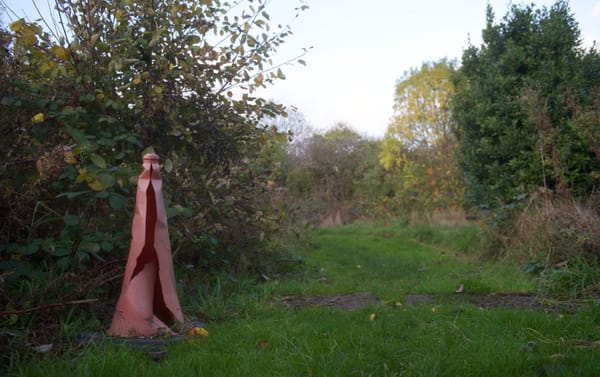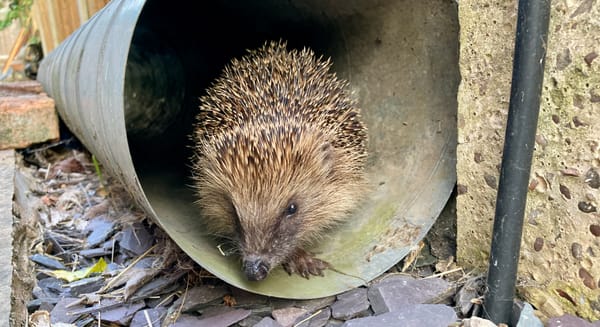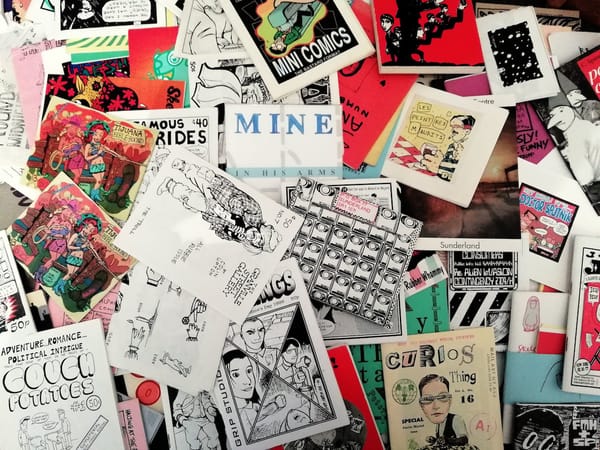The Aerobic Digest 8: Stinky heap
In which I detail how I made compost last year, share a rather eccentric 1939 booklet on compost making, and showcase some art about the acoustic study of the soil biome.
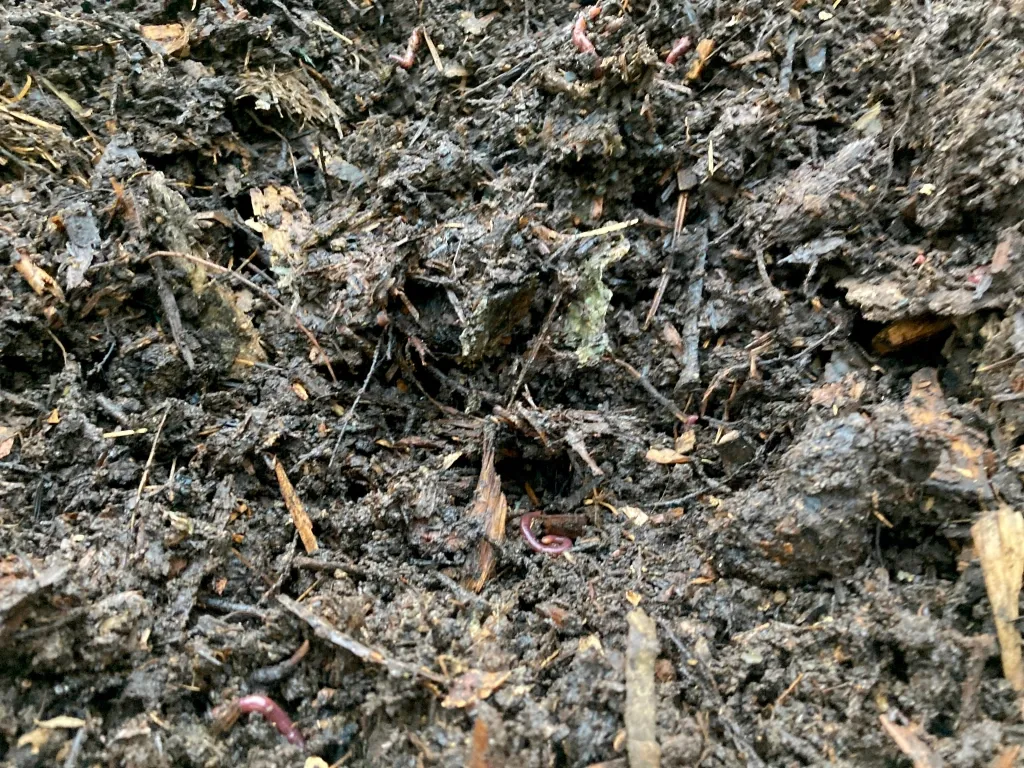
Hello you.
My first trip to the heaps in 2024 and there was a lot to do. Not only did I need to load up the current bay with a month’s worth of veg but the hexagonal bay was well overdue a turn, and I knew it was going to be a bad one.
According to my notes this was mostly filled in October when Fiona was clearing the allotment plots and giving me a lot of plants. Also the rabbit’s hay was particularly green without the usual long stems. It was effectively grass cuttings, which is fine but needs padding out with browns. Usually this would be paper and woodchip, but the woodchip pile was mostly leaves with very little woody material. I did my best with what paper I could get but by the end I was sure the mix wasn’t right.
And so it proved to be. I forked out very heavy clumps of barely rotting food, stringy plants, all with a quite pungent smell. Aerobic digestion this was certainly not!
I’d come prepared though and layered it back in with copious shredded paper, mulched Christmas trees and actual woodchip. This should get the temperature back up and speed things up, fingers crossed.
The Pete compost method, 2023 version
I was looking back at my notes from last year and noticed I have a method now. It’s not perfect by any means and I’m always looking to tweak it, but this is how I aimed to process a compost heap in 2023, using a three bay system where the two outer bays are primary and the middle one is secondary.
Adding material
Start with a layer of woodchip that will allow air to pass along the base of the heap. Include a few perforated drain pipes buried in the woodchip.
Layer ingredients as follows:
Food scraps and/or plant material
Shredded paper and cardboard
Spoiled hay and poop from the rabbits.
Woodchip
Top off with a decent layer of woodchip to retain moisture and prevent smells.
Depending on the dampness of the ingredients, add roughly 5 litres of water / urine for each of the above layer cycles. Alternatively soak the paper and hay before adding.
First resting
Once the heap is full, leave it for a few weeks. A month is probably long enough. Water during hot weather.
Turn the heap out into a pile outside your bay. See how it’s getting on:
Claggy lumps of food and bad smells mean not enough brown. Needs more woodchip and/or paper.
Dried out means not enough water. This is a problem in the summer - add plenty of water and potentially keep it covered to reduce evaporation.
Shovel it back into the bay, adding browns and/or water as appropriate as you go.
Top off with a decent layer of woodchip to keep in moisture and reduce smells.
Leave it for another month or so.
Second resting
- The heap should now have shrunk to half the size of the bay.
- Shovel the heap into your middle secondary bay. If it’s empty it will be half full. If it’s half full this will bring it to the top.
- If your fixes from the previous turn haven’t helped (or have gone too far the other way) add water and/or browns as needed.
- Water the heap and layer some cardboard or paper sacks on the top to keep moisture in.
- Once you have a full bay, leave it for another month or two, watering occasionally if the weather is warm.
Done?
- Dig into the heap with a fork or giant corkscrew and see how it’s doing. Check mostly for smell - anything undigested will have a stink to it. If it smells nice and earthy then it’s good to go
- Not everything will have rotted. There’s likely to be plenty of larger chips of wood and plants stems, but these are OK. If you find any lumps or pockets that definitely aren’t done, throw them into your active pile.
- Either turn this into your storage heap or spread it directly onto your beds. Be aware that it will still be quite raw so maybe avoid spreading around delicate plants, but it’s perfect for beds that are resting over the winter.
That’s a minimum four month turnaround which is doable, though I tend to stretch it out to eight or nine depending on how much material I’m getting. Bear in mind I’m just using this for spreading on the top of no-dig beds. This isn’t “finished” compost for potting or anything like that - it’s more a mulch. If you want a nice fine compost then I’d suggest taking my end product and giving it to a worm farm. But that’s a whole other topic.
Historical document corner
Thanks to Liz Howlett for sending through this scan of an eight page guide to composting from 1939 by the subject of her newsletter, Adela Marion Curtis.

It’s a fantastic mix of the sensible advice and opinionated rants. I learned a few useful things, the key one being to water the sides, not the centre, of the heap. I usually water evenly, but of course the sides will dry out first. I’m definitely going to do this going forward.
But then suddenly we’re into a tirade against rats:
It is the duty of every householder to destroy the National Enemy RAT which costs the nation one hundred million pounds sterling every year. Rodine put down once a month keeps them away, and a gin is better than the wire trap. Many a housewife picks thyme, parsley, mint, etc., from her herb-patch that looks as clean as a new pin, but a microscope would show that the filthy body of a rat had run through it in the night.
And an epic rant about the evils of municipal sewage.
The waste of every living creature is enough to provide fertilization for its food supply when the waste is intelligently used. But man interferes with the marvellous cycle of Nature in which nothing is useless; and by breaking her rhythm he makes the discord of disease for himself and all below him.
The foolish godson of Queen Elizabeth who invented the “water closet” has been a malefactor to the race: and the County Councils and their Sanitary Surveyors and Medical Officers perpetuate his evil folly instead of learning from Moses the true hygiene.
The “foolish godson” is probably John Harrington who invented the flush toilet in 1596.
Marvellous stuff. Download the PDF here.
Art / science : Listening to soil
Via this overview of biodiversity issues in 2024 comes the notion of monitoring the health of soil by the sounds it makes.
What does healthy soil look like? Conventional strategies for determining how healthy soils are and what they might need to be healthier require literally digging in – a time-consuming and expensive task.
Emerging technologies are making it possible to instead hear the condition of soil beneath the surface by using sound-capturing technology to identify the location and movements of underground invertebrates as they go about their activities of daily living.
Known as soil ecoacoustics, the noninvasive approach could make it possible not only to easily characterise soil health, but to track and enhance restoration of previously degraded soils, boosting their ability to serve as the literal underpinning of healthy, biodiverse habitats.
Efforts are proposed to make the technology friendly enough for use by citizen scientists and to develop strategies for combining it with other approaches to environmental monitoring.
The link is to an academic paper which feels like a first step in taking the sounds of the creepy crawlies that vibrate their way through the soil and interpreting them. It also raises the intriguing idea of noise pollution affecting soil health, just as it does to marine life.
I have no idea how useful this is, but anything that encourages us to see soil as a complex arena bursting with life is of interest to me.
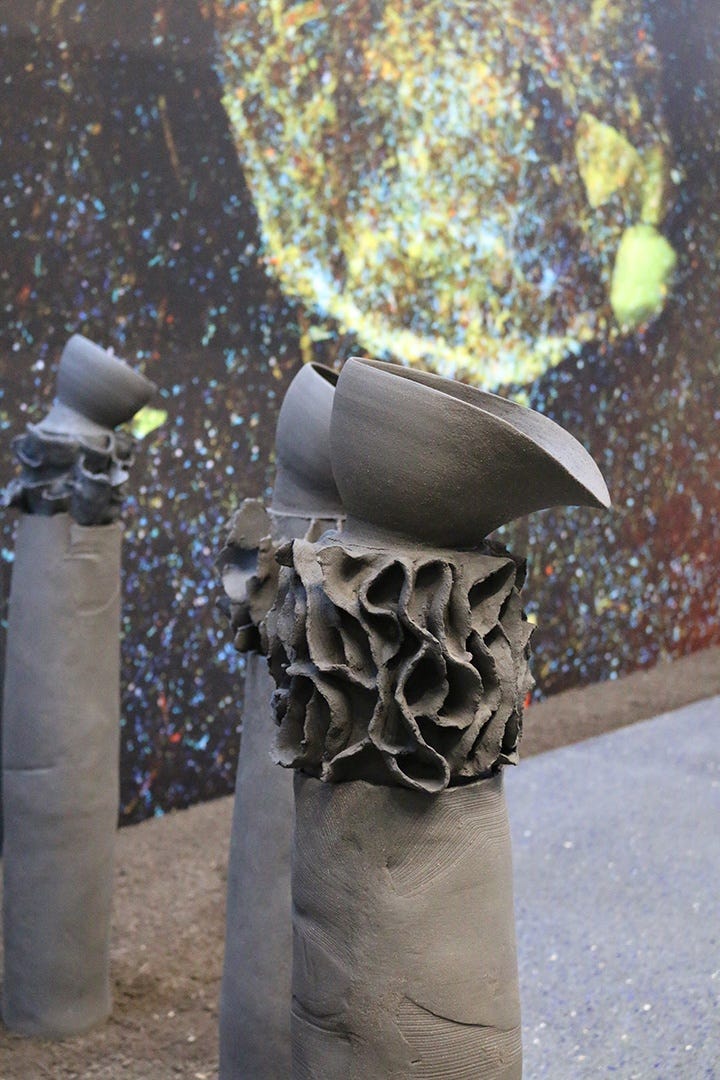
The paper has an intriguing image in it from Listen to the soil, an artwork by Karine Bonneval whose work deals with “breathing, moving and listening with the plant world”. She created these terracotta listening devices inspired by microscopic fungal structures which the visitor holds their ear to, imagining they’re listening directly to the soil itself.
The gallery exhibit is cool but I’d love to come across one of these in the woods.

I have a load more links to articles and videos saved in my big document of things to write about in this newsletter but I’m going to save them for next time, which hopefully will be soon. Or maybe it won’t! Who knows.
Please continue to send compost-related things to info@aerobicdigest.email or @ me on Mastodon where I keep tabs on the #compost tag.
Your friend in rotting vegetable matter,
Pete Ashton
